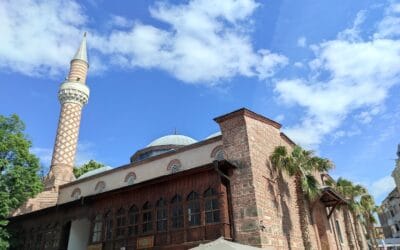The Castle of Tavira
-
The Castle of Tavira (Portuguese: Castelo de Tavira) is a medieval castle located in the parish of Santiago, Tavira municipality, Faro district of Portugal. In a dominant position over the mouth of the river Gilão, the settlement has developed as an important sea port since antiquity, with its predecessors dating back to the 8th century BC, passing through the hands of Phoenicians, Greeks, Celts, Carthaginians, Romans, Moors and the Portuguese crown.
-
At the time of the Christian reconquest of the peninsula, Portuguese forces reached the eastern Algarve from 1238. Tavira was conquered on June 11, 1239 (May 1240, according to Alexandre Herculano or even 1242 according to other sources), by the forces under the command of D. Paio Peres Correia, Master of the Order of Santiago. Tradition associates this achievement with a reprisal by that Order for the death of seven of its knights in an ambush while hunting on the site of Antas, in the current parish of Luz.
-
On January 9, 1242 (or 1244 according to other sources), Sancho II of Portugal (1223-1248) donated the domains of Tavira and the patronage of his church to the Order of Santiago, a donation confirmed in 1245 by Pope Innocent IV.
-
Pretending that the city had been conquered by a Castilian Military Order, Alfonso X of Castile claimed it for himself, coming to impose siege and conquer it in 1252. The following year, a treaty was signed by which Alfonso III of Portugal (1248-1279) would marry Afonso X’s daughter and, if that union resulted in a son who would turn seven, his maternal grandfather would give him the gift of the Algarve. Since the conditions of this legislation were fulfilled in 1264, Afonso X delivered the Algarve to Afonso III by letter of 20 September, set in Seville. Because of this act, the Portuguese sovereign granted foral letters to various Algarvian villages, the first of which Tavira in August 1266.
-
Under the reign of King Dinis (1279–1325), the castle was repaired and reinforced and the village fence expanded around the year 1292. The sovereign, by Royal Letter of April 15, 1303, extended the privileges of the residents, preventing their property from being seized or sold except for debts with the Crown.
-
At the time of the 1383-1385 succession crisis, the Master of Avis, future John I of Portugal (1385-1433) donated Reguengo de Tavira to Fernão Álvares Pereira, brother of Constable Nuno Álvares Pereira. Later, after the conquest of Ceuta, started the process of the Portuguese Discoveries, the village would see its strategic and economic importance increase. The castle, however, showed risk of collapse, according to the complaint of its people before the courts of 1475.
-
Under the reign of Manuel I of Portugal (1495–1521), the village received the “Foral Novo” (1504), raising it to city status on March 16, 1520, among other important privileges. Vasco Eanes Corte-Real was the Alcaide-mor (Castle Commander) at the time.
-
In 1573, when King Sebastian (1568–1578) visit Tavira, construction work on the Santo Antonio Fort (Forte do Rato), in front of the Gilão river bar in 1577, was in progress.
-
Later, in the context of the Portuguese Restoration War, John VI of Portugal (1640–1656) confirmed all the privileges granted to Tavira by his predecessors, determining works to modernize the medieval castle, reinforcing its structure and adapting it to the shots of the then modern artillery. The defense of the village was complemented, in 1672, by the beginning of the construction of the São João da Barra de Tavira Fortress, in Gomeira, bordering the Gilão river in 1717.
-
In the 18th century, the castle’s structure was severely damaged by the 1755 Lisbon earthquake, which certainly contributed to the fact that, in the following centuries, the defensive perimeter of the settlement was dismantled to a great extent.
The Tavira Castle walls are classified as a National Monument by decree published on May 16, 1939.








